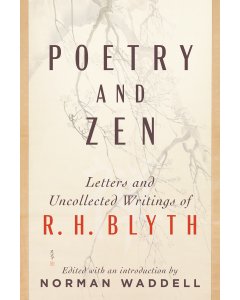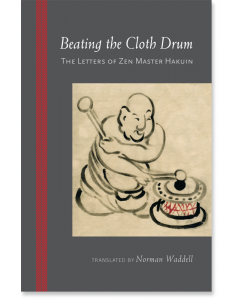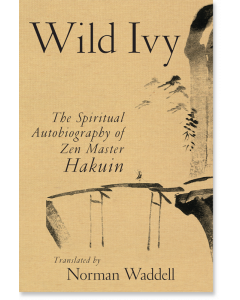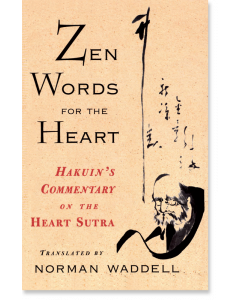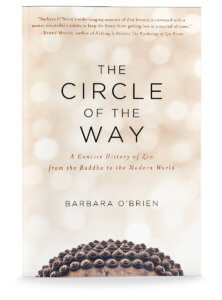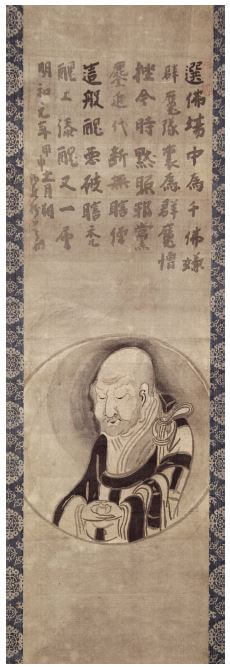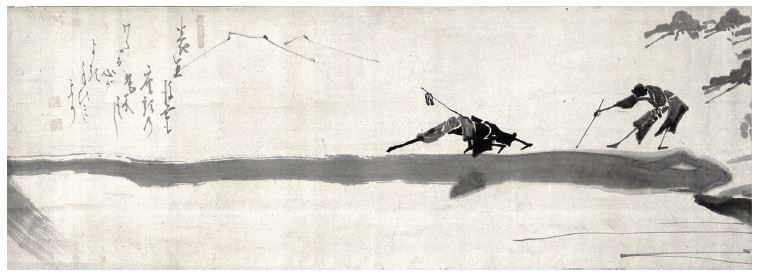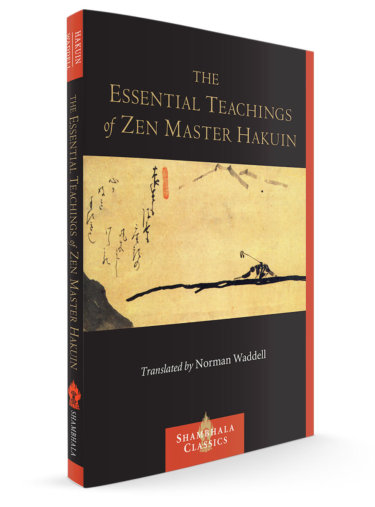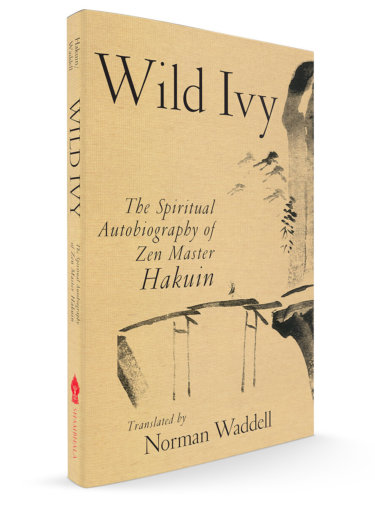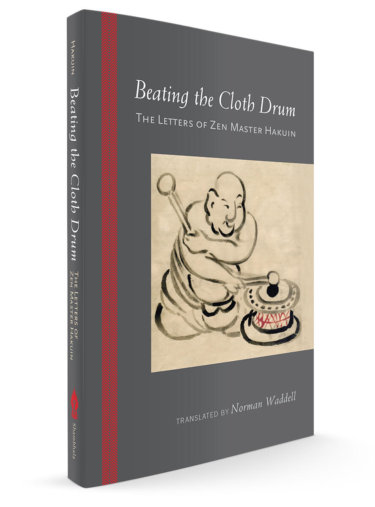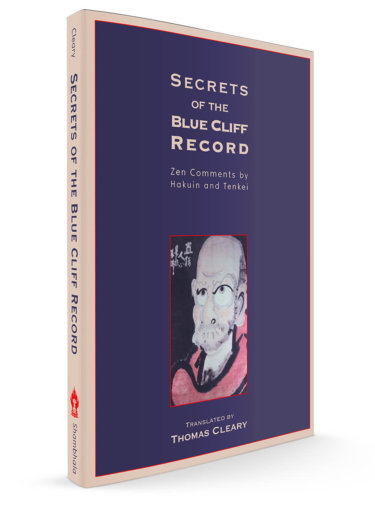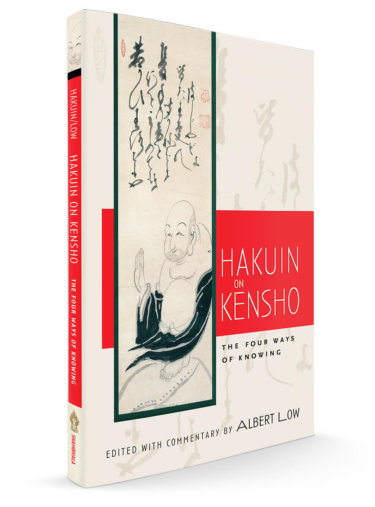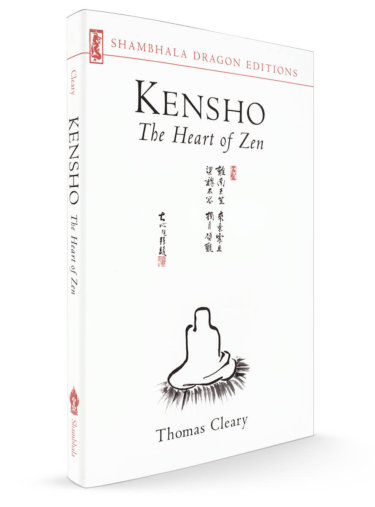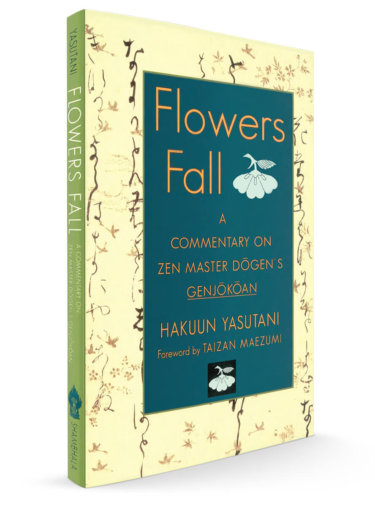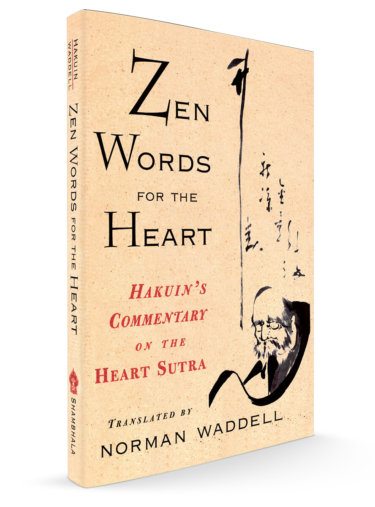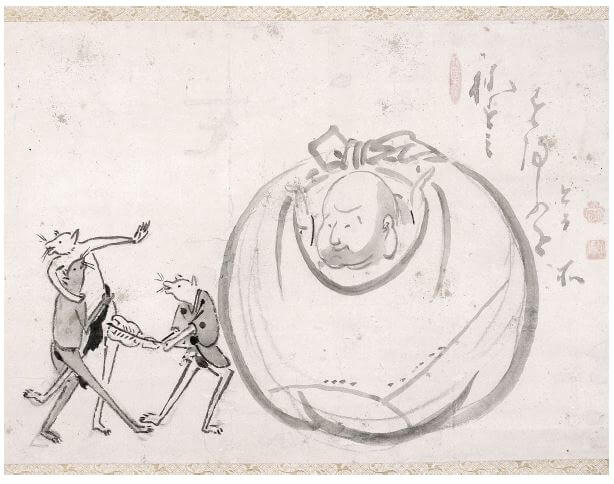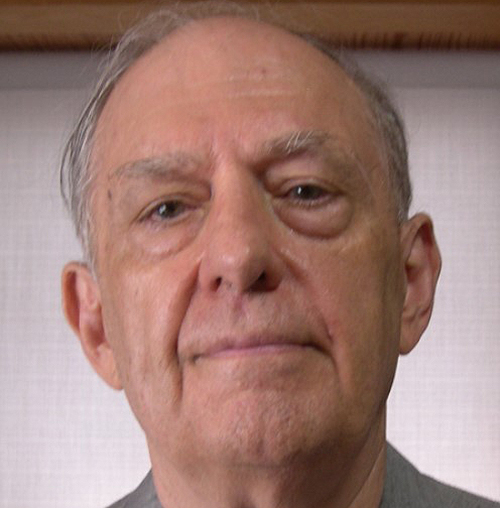

Norman Waddell
NORMAN WADDELL, born in Washington, D.C. in 1940, was attracted to Japan by the works of the legendary D. T. Suzuki and his protégée R. H. Blyth. He taught at Otani University for over thirty years, and was editor of the Eastern Buddhist Journal for several decades. He has published more than a dozen books on Japanese Zen Buddhism and is considered one of the finest translators of sacred texts of our time. He is the authoritative English translator of works by and about Hakuin.
Norman Waddell
-
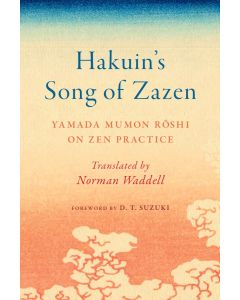 Hakuin’s Song of Zazen$24.95- Paperback
Hakuin’s Song of Zazen$24.95- PaperbackBy Yamada Mumon Roshi
Foreword by D. T. Suzuki
Translated by Norman Waddell -
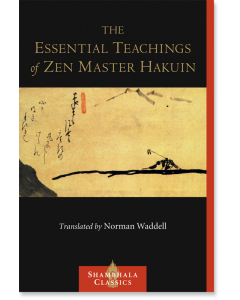 The Essential Teachings of Zen Master Hakuin$24.95- Paperback
The Essential Teachings of Zen Master Hakuin$24.95- PaperbackTranslated by Norman Waddell
By Hakuin
GUIDES
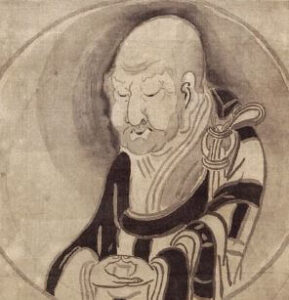
Hakuin Ekaku: A Reader's Guide

This is part of a series of articles on the arc of Zen thought, practice, and history, as presented in The Circle of the Way: A Concise History of Zen from the Buddha to the Modern World. You can start at the beginning of this series or simply explore from here.
Explore Zen Buddhism: A Reader's Guide to the Great Works
Overview
Chan in China
- The Works of the Chan and Zen Patriarchs
- The Works of Zen in the Tang Dynasty (618-907)
- The Works of Zen in the Song Dynasty (960 - 1279)
- The Great Koan Collections
Zen in Korea
Zen in Japan
> Hakuin Ekaku: A Reader's Guide
Additional Resources
- The Heart Sutra: A Reader’s Guide
- Zen in the Modern World (Coming Soon)
- Foundational Sutras and Texts of Zen (Coming Soon)
- Zen and Tea
The Circle of the Way devotes ten pages to Hakuin, who we know quite a bit about:
Hakuin Ekaku (1685–1768) lived most of his life in Hara, near present-day Numazu in eastern Shizuoka Prefecture, an area graced by the iconic Mount Fuji. At the age of fourteen he was ordained in a small temple in Hara, Shoin-ji. After he realized enlightenment he served as abbot in Shoin-ji for the rest of his life. Yet Hakuin’s unassuming life had an enormous impact on the Rinzai Zen practiced today. Indeed, it’s often said that all modern Rinzai masters trace their lineage back through Hakuin. And we know quite a bit about Hakuin’s life, or at least Hakuin’s version of it, because he wrote extensively about it.
The following selection was adopted from an earlier article by legendary Shambhala editor and Zen specialist Dave O'Neal, who retired from Shambhala a few years ago and is much missed
Two and a half centuries after his death, the thing Hakuin (c.1685–1768) is most remembered for is his line "What is the sound of one hand? " which, for some unknown reason, became the most famous of all koans—those notoriously confounding questions Zen masters use to check their students' awakening. It pops up in the strangest places whenever Zen inscrutability needs to be demonstrated: it's been the title of a novel, of a movie—and even the answer to a question on Jeopardy. It's hard to know what Hakuin would have thought of his inadvertent contribution to twenty-first-century popular culture, but if the record he left us in words and images is any indication, he had a fine and subtle sense of humor. He'd likely have gotten a kick out of the Simpsons episode in which Lisa poses the famous case to her aggressively indifferent brother Bart.
Cartoon sitcoms aside, Hakuin Ekaku is undeniably one of the most important of all Zen masters. He came into the Rinzai school of Zen and revitalized it during a period when its very survival was in question, focusing practice back on the basics of zazen and koan study. He was the quintessential Zen master of the people, who extended his teaching far beyond the monastery to include folks from all walks of life. All modern Rinzai masters trace their lineage back through Hakuin. Among the more well-known of them to teach recently in the West have been Soen Nakagawa Roshi, Kyozan Joshu Sasaki Roshi, and Maurine Stuart Roshi, one of the first female Zen masters in America.
Compared to a lot of figures from the eighteenth century, we actually know a good deal about the details of Hakuin's life-primarily through his own autobiographical writings, Goose Grass and Wild Ivy, and also through his student Torei Enji's Biography of Zen Priest Hakuin.
Hakuin was born around 1686 in a small village near the base of Mount Fuji. At age fifteen he secured grudging permission from his parents to enter life at nearby Shoin-ji temple, from which he was eventually sent to Daisho-ji (also near his home village), where he spent his novitiate and where he read the entire Lotus Sutra. He's said to have found the esteemed scripture deeply disappointing, as it "consisted of nothing more than simple tales about cause and effect." He didn't change his low opinion about it until the night of his enlightenment twenty-five years later.
Four years after his entry into the monastic life, his teacher allowed him to set off on pilgrimage to study with Zen masters all over Japan. This pilgrimage ended up lasting fourteen years, ending only when he was called back to become priest at Shoin-ji, which had fallen into near-ruin during the years he was away. It became his place of practice and teaching for the rest of his life. An example of the intensity with which Hakuin practiced comes from Torei's biography:
He endured great privation without ever deviating from his spare, simple way of life. He didn't adhere to any fixed schedule for sutra-chanting or other temple rituals. When darkness fell, he would climb inside a derelict old palanquin and seat himself on a cushion he placed on the floorboard. One of the young boys studying at the temple would come, wrap the master's body in a futon, and cinch him up tightly into this position with ropes. There he would remain motionless, like a painting of Bodhidharma, until the following day when the boy would come to untie him so that he could relieve his bowels and take some food. The same routine was repeated nightly.
On a spring night in 1726, when he was forty-one, after numerous other "small" enlightenment experiences, Hakuin attained final, decisive awakening while reading the passage in the Lotus Sutra (the same scripture he'd scorned as a youth) that declares a bodhisattva's mission as one of practicing beyond enlightenment until all beings are saved. That passage became the theme of the rest of his life. Up until that night, Hakuin's practice was directed toward his own awakening. But from that moment on, his life was completely devoted to leading others to liberation—something for which he seems to have had a talent. Students gathered around him in increasing numbers, and before long, monks, nuns, and laypeople from all over Japan began to make their way to this once-obscure temple to hear Hakuin expound on the dharma. The countryside around Shoin-ji sometimes came to resemble a big Zen camp meeting.
The Essential Teachings of Zen Master Hakuin
Hakuin left over fifty written works, most of them based on recorded talks, several of which have been translated into English by the great modern Hakuin scholar Norman Waddell, and several of which Shambhala has been honored to publish. The Essential Teachings of Zen Master Hakuin is a translation of the work whose Japanese title translates "Talks Given Introductory to Zen Lectures on the Records of Sokko," which is considered one of his most important works, most representative of his teaching in general. It's a great place to start with Hakuin, and it includes the wonderfully titled talk "Licking Up Hsi-keng's Fox Slobber."
In this work, Hakuin sets forth his vision of authentic Zen teaching and practice, condemning his contemporaries, whom he held responsible for the decline of Zen, and exhorting his students to dedicate themselves to “breaking through the Zen barrier.” Included are reproductions of several of Hakuin’s finest calligraphies and paintings.
Wild Ivy: The Spiritual Autobiography of Zen Master Hakuin
There is no better place to start to explore Hakuin then with his own words and these can be found in Wild Ivy: The Spiritual Autobiography of Zen Master Hakuin.
A fiery and intensely dynamic Zen teacher and artist, Hakuin (1685–1768) is credited with almost single-handedly revitalizing Japanese Zen after three hundred years of decline. As a teacher, he placed special emphasis on koan practice, inventing many new koans himself, including the famous “What is the sound of one hand clapping?” This English translation of Hakuin’s intimate self-portrait includes reminiscences from his childhood, accounts of his Zen practice and enlightenment experiences, as well as practical advice for students.
Beating the Cloth Drum: Letters of Zen Master Hakuin
The seriousness of Hakuin's efforts to save all beings, including lay-beings, is demonstrated in his correspondence, some of which has been collected and translated into English (again, by the indefatigable Norman Waddell) under the title Beating the Cloth Drum. It's full of his advice for practice and life to both monks and laypeople, and it includes an especially interesting series of intimate letters between Hakuin and his dharma heir and biographer, Torei. This book provides a rare, intimate look at Hakuin the man, through this personal correspondence. Beating the Cloth Drum contains twenty-eight of Hakuin's letters to students, political figures, fellow teachers, laypeople, and friends. Each letter is accompanied by extensive commentary and notes. They showcase Hakuin's formidable, thoughtful, and sometimes playful personality—and they show that the great master used every activity, including letter-writing, as an opportunity to impart the teachings that were so close to his heart.
Secrets of the Blue Cliff Record: Zen Comments by Hakuin and Tenkei
Secrets of the Blue Cliff Record is a fresh translation featuring newly translated commentary from Hakuin and Tenkei Denson (1648–1735) of the Soto sect of Zen. This translation and commentary on The Blue Cliff Record sheds new light on the meaning of this central Zen text. It includes Hakuin's commentary on all 100 cases of that classic collection. Unfortunately, it contains only excerpts-as his complete commentary on Blue Cliff runs to over 900 pages!
Hakuin on Kensho: The Four Ways of Knowing
Kensho is the Zen experience of waking up to one’s own true nature—of understanding oneself to be not different from the Buddha-nature that pervades all existence. The Japanese Zen Master Hakuin (1689–1769) considered the experience to be essential. In his autobiography he says: “Anyone who would call himself a member of the Zen family must first achieve kensho-realization of the Buddha’s way. If a person who has not achieved kensho says he is a follower of Zen, he is an outrageous fraud. A swindler pure and simple.”
Hakuin’s short text on kensho, “Four Ways of Knowing of an Awakened Person,” is a little-known Zen classic. The “four ways” he describes include the way of knowing of the Great Perfect Mirror, the way of knowing equality, the way of knowing by differentiation, and the way of the perfection of action. Rather than simply being methods for “checking” for enlightenment in oneself, these ways ultimately exemplify Zen practice. Albert Low has provided careful, line-by-line commentary for the text that illuminates its profound wisdom and makes it an inspiration for deeper spiritual practice.
Kensho is the transformative glimpse of the true nature of all things. It is an experience so crucial in Zen practice that it is sometimes compared to finding an inexhaustible treasure because it reveals the potential that exists in each moment for pure awareness free from the projections of the ego. Among the traditional Zen works are a number of important texts focusing on the profound subtleties of this essential Zen awakening and the methods used in its realization. The selections here include several works by Hakuin, whose teachings emphasize the techniques used in the cultivation and application of kensho and the importance of going beyond the experience itself to apply Zen insight to the full range of human endeavors.
This is also included in Volume III of Classics of Buddhism and Zen: The Collected Translations of Thomas Cleary.
Flowers Fall: A Commentary on Zen Master Dogen's Genjokoan
Dogen's Genjokoan is often considered to be the key text within Dogen's masterwork, Shōbō Genzō. The Genjokoan addresses in terse and poetic language many of the perennial concerns of Zen, focusing particularly on the relationship between practice and realization.
In The Circle of the Way, Barbara O'Brien discusses the Five Ranks and says,
Hakuin describes the second rank, the universal with the particular, as experiencing all phenomena—people, halls and pavilions, plants and trees, mountains and rivers—as one’s own “original, true, and pure aspect.” Viewing the phenomenal world is like looking in a mirror and seeing oneself, Hakuin said. All appearances are the precious mirror. Hakuin quotes Eihei Dogen’s “Genjokoan”—“To carry yourself forward and experience myriad things is delusion. That myriad things come forth and experience themselves is awakening.” “This is just what I have been saying,” Hakuin added.
Zen Words for the Heart: Hakuin's Commentary on the Heart Sutra
Hakuin's commentary on the Heart Sutra is a Zen classic that reflects his dynamic teaching style, with its balance of scathing wit and poetic illumination of the text. Hakuin's teaching style was what might be referred to today as "in your face. " This quality is nowhere more apparent than in his commentary on the Heart Sutra, which is based on talks he gave around age sixty, at the height of his influence. He inscribed the book's original title page with these words: "written by Hakuin Ekaku, edited by hunger and cold, revised by cold and hunger." Hakuin pokes fun at Avalokitesvara, at Shariputra—and at his listeners—throughout.
Hakuin's sarcasm, irony, and invective are ultimately guided by a compassion that seeks to dislodge students' false assumptions and free them to realize the profound meaning of the Heart Sutra for themselves. The text is illustrated with Hakuin's own calligraphy and brush drawings.
The fact is that only a small portion of Hakuin's work has been translated into English at this point. We can only hope that a new generation of scholars will continue the work of bringing Hakuin's teaching into our language. In the meantime, we can exult in his art—for which no translation is necessary—and we can be grateful for the work of people like Norman Waddell, through whom we've come to know texts like Hakuin's delightful "Song of Zazen":
Boundless and free is the sky of Samadhi!
Bright the full moon of wisdom!
Truly, is anything missing now?
Nirvana is right here, before our eyes,
This very place is the Lotus Land,
This very body, the Buddha.

